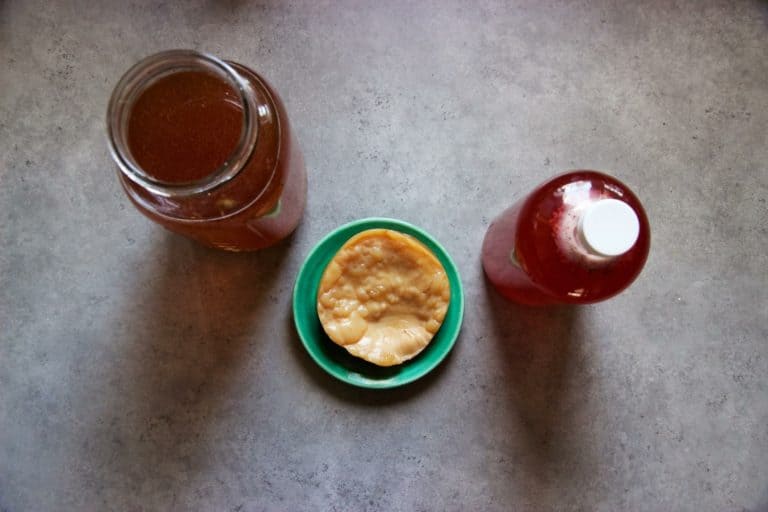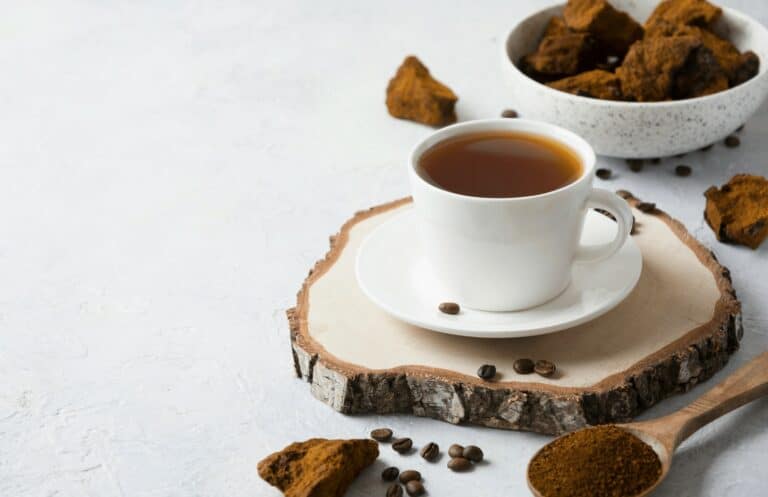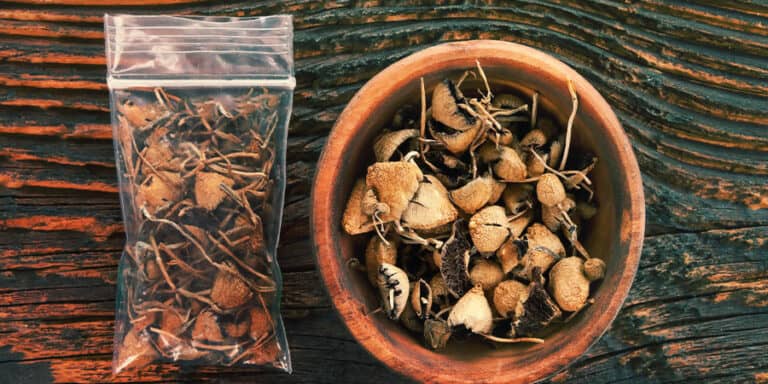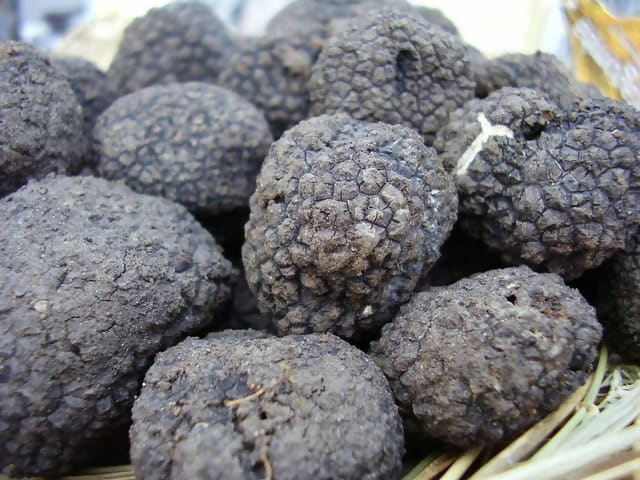A Comprehensive Guide to Shiitake Mushrooms

If you’re a fan of asian cuisine, then without a doubt you’ve tasted the delicious shiitake mushroom. These earthy mushrooms are found across the globe and widely praised for their health benefits and earthy, umami flavor.
In this article, we’ll take a tour through all things shiitake mushrooms. We will dive into their nutritional content, their bioactive compounds that flaunt a wide variety of health benefits, and how they are commonly consumed and cultivated. We’ll end with some delicious shiitake recipes to get the most flavor out of this fantastic fungi.
Introduction to Shiitake Mushrooms (Letinula edodes)
Shiitake are edible mushrooms native to East Asia, where they are popularly found in China, Japan, and Korea. They go by other names that reference the type of hardwood they commonly grow on, including “sawtooth oak mushroom”, “black mushroom”, “black forest mushroom”, and “golden oak mushroom”.
They currently enjoy worldwide cultivation, second in popularity only to button mushrooms, for their impressive health benefits and delicious taste. Currently, about 150,000 tons of shiitake mushrooms are produced worldwide each year.
Shiitake mushrooms are characterized by dark brown or black caps with white speckles. These convex caps grow between two to four inches in diameter and commonly lighten with age. Their gills are white or light brown and make a white spore print. The woody, smooth stem is white to light brown with no ring.
They can be found fruiting naturally in the the late summer and early fall on hardwoods or inoculated logs of trees such as oaks, alders, birch, and the shii tree (the latter of which shiitake derives its name from).
Health Benefits of shiitake
The Nutrition of Shiitakes
Shiitakes are highly nutritious mushrooms rich in many essential vitamins and minerals and low in fat, sodium, and calories. Of course, how the shiitakes are grown, stored, and prepared is a major factor that influences the nutritional content.
Shiitakes are an excellent source of copper. Shiitakes provide 650 micrograms of copper in 1/2 cup cooked. That’s 72% of daily copper intake from just a single serving of shiitake. Per 100g of dried shiitake, you get 258% RDA of this essential mineral. Shiitake is a great source of the antioxidant minerals zinc, manganese, and selenium, providing 9% DV, 7% DV, and 33% DV per cooked half cup.
They are also a good source of the B-complex vitamins, including pantothenic acid (52% DV per half cup of cooked shiitake), vitamin B2 (9% DV), vitamin B6 (7% DV), vitamin B3 (7% DV) and folate (5% DV).
When shiitakes are grown outside with sun exposure or treated with UV light, they produce bioavailable vitamin D. Vitamin D levels can range from 100IU per 100 grams to up to 46,000IU per 100 grams when allowed full sun exposure.
Bioactive components of Shiitakes
Special research attention has been paid to many bioactive components of shiitake, most notably the polysaccharides (complex carbohydrates made of branched sugar molecules) called beta-D-glucans. Many studies have supported their unique ability to support scavenge free radicals, support the growth of benecial bacteria in the fut, stabilize blood sugar levels, fight inflammation, and even prevent some types of cancers. These polysaccharides also possess immune-stimulating effects because of their action upon certain immune cells, including NK cells, T-cells, and macrophages.
Shiitake contains a beta-glucan called lentinan in the fruiting body. In vitro and animal studies have demonstrated its anti-tumor activity and immune modifying effects.
They also contain an alkaloid called eritadenine. This compound inhibits the activity of angiotensin-converting enzyme. Inhibition of this enzyme mitigates unwanted blood vessel constriction and helps lower cholesterol levels. This may make shiitake a great functional mushroom to ward off hypertension and heart disease, but further research in humans is needed to confirm these effects.
Shiitake is also a potent source of ergothioneine, containing approximately 13mg per three ounce serving. This amino acid has therapeutic potential as a powerful antioxidant and anti-inflammatory compound by protecting cells from oxidative stress.
Additionally, shiitake contains many terpenoids, sterols, and lipids that help stimulate host immunity, reduce blood cholesterol, and show anticancer activity in animal and in vitro studies.
The Medicinal Uses of Shiitakes
Shiitake mushrooms have been used for centuries in Traditional Eastern Medicine. Most of the recent research has used extracts of shiitake that far exceed the bioactive potency found in average amounts of shiitake. However, the extracts have been shown to be effective for weight management, cancer treatment, immune system stimulation, and skin care.
Weight management
Shiitake mushrooms are low in fat, calories, and sodium, which may be great for weight management, especially when used as a meat substitute. In a year-long clinical trial from 2013, 73 obese adults substituted red meat for shiitake mushrooms. The subjects on the mushroom diet were found to have lost an average of seven pounds compared to the standard diet group. They also had lower total body fat, lower blood pressure, and reduced inflammatory markers compared to the control group.
Additionally, its cholesterol-lowering effects and blood sugar regulating properties make shiitake a great diet add-on in those who are at risk for diabetes or coronary artery disease.
Cancer treatment and prevention
Lentinan is a shiitake extract and approved drug in Japan. It is classified as a “biological response modifier” because it may help raise the immunity of cancer patients whose defenses are commonly impaired during conventional cancer treatments.
It is used intranvenously as an adjuvant alongside chemotherapy and radiotherapy for prostate cancer, colorectal cancer, and gastric cancers. Cancer treatments supplemented with lentinan have been found in clinical trials to extend survival times and reduce adverse side effects.
Skin care
Shiitake extracts are commonly found in beauty products. The high antioxidant and nutrient content as well as the presence of kojic acid helps reduce skin inflammation and brighten skin. Kojic acid is a natural alternative to hydroquinone, a commonly used skin bleaching agent that fades scars and age spots. Shiitake extract products may therefore be beneficial for those with eczema, acne, rosacea, and skin blemishes or anyone who wants to maintain healthy, supple skin.
Growing Shiitake Mushrooms
Shiitake mushrooms are a widely cultivated mushroom in East Asia and more recently, North America. China and Japan are the largest producers of shiitake mushrooms. They are responsible for supplying 80-90% of the mushroom’s commercial consumption. For home growers, shiitake mushrooms are a great beginner mushroom choice, and many different methods exist to grow them easily within weeks.
More recently, large-scale commercial cultivation of shiitake commonly use sawdust and grain additives like wheat bran as a substrate for growth. They are commonly cultivated in China and the U.S. in substrate bags of sawdust made from various hardwood trees. This method is generally seen as inferior to growing on hardwood logs, as many believe hardwood shiitakes have enhanced flavor, nutrition, and texture. However, sawdust bags are sustainable and lead to high harvest output because many bags can be growing simultaneously in tightly controlled conditions.
Shiitakes are commonly cultivated on hardwood logs inoculated with shiitake mycelium. This method mimicks how they grow naturally in the wild. As saprophytic mushrooms, they break down organic plant matter to grow, and they especially grow well on oak. Many suppliers sell commercial oak logs that have holes drilled in them. These holes are generally made four to eight inches apart with a depth of about 1 to 1.5 inches. Shiitake spawn formed into wooden dowels can be inserted into these holes with a mallet to colonize the logs in a matter of months. With a little shade and moisture, these logs will grow homemade shiitakes in just a few weeks. This is a good source for shiitake plug spawn. Perfect for backyard growers without access to fresh logs, the entire log set-up can also be purchased pre-incoluated from this source.
Shiitake mushroom kits can be purchased from reputable suppliers like Fungi Perfecti, the company founded by the esteemed mycologist Paul Stamets. These kits feature shiitake mycelium colonized in sawdust blocks. They require little maintenance, just a temperature between 50-80F and moisture every day. They can be harvested every two weeks for up to sixteen weeks.
While grow kits are generally the easiest, shiitakes will also grow in coffee grounds. Coffee grounds provide many nutrients for the mycelia and are already pasteurized from the coffee brewing process.
Many of the materials needed to grow coffee grounds can be commonly found around the house. All you need is a 2-gallon or 5-gallon bucket, coffee grounds, shiitake mushroom spawn (can be purchased here), a spray bottle, and cellophane.
The coffee grounds can either be saved up from coffee made at home (keeping in freezer until ready to use) or obtained from a local café.
- Fill the sterilized bucket half full with coffee grounds. Drill holes in the bucket, about a half-inch above the surface layer of the grounds for breathability.
- Break up shiitake spawn and add about 10-20% by weight. Moisten and mix thoroughly with the grounds.
- Cover the top of the bucket with cellophane wrap and poke holes to allow gas exchange. Keep the bucket in a humid, dark place in the house. After 2-3 weeks, the substrate will begin to be colonized by white filaments called mycelium.
- When the substrate is thoroughly colonized, remove the cellophane and move the bucket into a warm (between 50-75F) corner of the house with indirect sunlight.
- Spray the substrate twice daily with water. Within a week, little shiitake pinheads will emerge from the top layer of the substrate, and each day they will approximately double in size.
- When they have grown to 2-4 inches in diameter and the caps turn upward, you can harvest.
Lastly, be sure to check out the beginner’s guide to growing mushrooms article found here. These principles also apply to shiitake cultivation!
Consuming Shiitake Mushrooms: How are they used?
Shiitake mushrooms are known worldwide for their delicious, savory taste. Their spongy texture allows them to soak up the flavors of any dish they are a part of. They can be cooked either in dry or fresh form, steeped into teas, or taken as a supplement to boost the immune system.
Shiitake Mushroom tea
Either fresh or dried shiitakes can be steeped in boiling water to form a health-promoting tea. Shiitake tea works as a wonderful tonic to help abate some of the negative symptoms of flus and colds by easing congestion and stimulating the immune system. It may also help reduce cholesterol, reduce feelings of hunger, and fight inflammation.
To make mushroom tea, bring a pot of water to a boil and add a pinch of salt. Break shiitake into pieces and simmer for thirty minutes.
Dry Shiitake
A very popular addition in Chinese cuisine, shiitake are commonly rehydrated (soaked in water for about an hour) and used in stir-fries, soups, stews and other dishes. They may also be used to make highly savory broths. Being more concentrated, they have higher nutritional content compared to fresh shiitake and boast a much more flavorful boost of umami. Dry shiitake can be purchased at any East Asian store or online from reputable sources like this one. Dry shiitake can last up to a year when stored in an air-tight glass container in a cool, dark place.
Mushroom powder can also be used as an easy additive in any dishes that can benefit from a huge umami boost. It works great in omelettes, pizzas, soups, stews, stir-fries, and much more.
Fresh Shiitake
Fresh shiitake have a buttery, earthy taste and meaty, spongy texture. This makes them a great meat alternative for vegans or vegetarians. Like the common white button mushroom, they can be added to soups, stews, and pastas, or used as a versatile side dish for a variety of cuisines. The stems of fresh shiitake are commonly discarded because they are tough and woody. However, they can also be collected and added to boiling water to make a savory broth.
Fresh shiitake are commonly sautéed in oil or butter, baked, grilled, marinated, or stir-fried with veggies. Shiitakes can be eaten raw, but they can trigger an allergic reaction in some people called “shiitake dermatitis”, which makes an itchy rash all around the body. Fresh shiitake will last up to a week in a refrigerator when stored in a paper bag.
Shiitake Supplements
Shiitake supplements can be purchased as powders, capsules, and tincture extracts. This source of shiitake provides a potent source of the bioactive compounds found in shiitake. Supplementing daily with shiitake can provide a large boost to our immune system and increase the amount of antioxidants in our diet. Solaray is a good choice for shiitake capsules, and Host Defense makes a well-sourced shiitake extract tincture. If any side effects such as skin rashes or GI distress develop, stop using shiitake supplements. It is always best to consult with a medical professional before using an extract supplement for any condition.
Buying Shiitake Mushrooms Locally
Both dried and fresh shiitakes are widely available in large supermarkets and East Asia grocery stores everywhere. They can also be commonly found at local farmers markets, ranging from about $8 per pound to $16 per pound. This has the added benefit of being a local source.
When buying fresh shiitakes, search for mushrooms that are spongy, firm, and clean. Avoid any that smell pungent or have wrinkles and slimy spots. This indicates that these mushrooms are past their prime and wouldn’t last long in the refrigerator.
It is always best to buy shiitake mushrooms organic. Since mushrooms tend to soak up minerals and compounds around the environment in which they grow, buying organic reduces the probability of being exposed to contaminants such as pesticides and heavy metals.
Since shiitake are very spongy, it is best to clean them before use with a brush or damp paper towel. Running them under water can make them absorb a lot of moisture and cause them to be soggy. For more information on preparing edible mushrooms like shiitake, be sure to check this article out.
Shiitake Recipes
Superfood Shiitake Stir-fry
-2 tablespoon sesame oil
-1 teaspoon cornstarch
-½ cup of vegetable broth
-3 tablespoons of soy sauce
-8 fresh shiitake sliced in quarters
-2 cloves garlic, minced
-4 cups of sliced vegetables that you prefer. Sugar snap peas, carrots, bell peppers, broocoli, onion, water chestnuts, baby corn all work great!
-1 cups cooked brown rice
- In a small bowl, combine soy sauce, cornstarch, and vegetable broth. Set aside.
- Heat sesame oil under medium-high heat in a wok or large skillet.
- Add garlic, shiitake mushrooms and vegetables of your choice. Stir constantly and cook for five minutes.
- Stir in the soy sauce mixture and cook for an additional two minutes until thickened.
- Serve over brown rice.
Other great shiitake recipes to try:
- Shiitake Angel Hair Pasta. Simple and great tasting shiitake pasta recipe.
- Miso Soup with Shiitake mushrooms. Simple, healthy, and savory miso soup. Also great with bok choy.
- Spinach and Shiitake Mushroom Quiche. A hearty and healthy breakfast option with plenty of shiitakes and protein.







